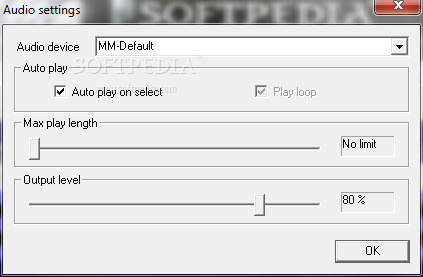

The 915/925 both support PCI Express x16, using 16 lanes for up to 4GB/second bandwidth to and from the graphics card (ideal for Microsoft's forthcoming Longhorn operating system). For graphics work, multiple 'lanes' are used to increase this bandwidth still further.
#CDXTRACT 5 SERIAL#
The PCI Express x1 expansion slots use a high-speed serial buss and are only about an inch long, but offer double the bandwidth of a standard PCI socket. In practice, most motherboard manufacturers will only provide DDR2 support with the 925X chipset and partner the 915P with DDR, for a significantly cheaper product. Only the 925X supports ECC (Error Correction Code) RAM for extra security, but the 915 chipset supports a slower 533MHz in addition to the 800MHz System buss, and slower (and cheaper) DDR400/333 memory as well as the faster DDR2 533/400 memory. DDR2 memory is more flexible than its predecessor, allowing (for instance) a pair of 256MB DIMMs to be paired with a single 512MB DIMM to run in interleaved dual-channel mode, and the memory controller supports a bandwidth of up to 8.5GB/second. Both support the new 800MHz LGA775 processors, dual-channel DDR2 memory, up to four PCI Express x1 slots, and one PCI Express x16 slot for the graphics card. The 925X chipset roughly replaces the existing 875P Canterwood, while the 915P replaces the 865P Springdale range. As with the Dothan processors discussed in last month's column, the new Pentium 4 models adopt a new and confusing numbering scheme, with the 2.8GHz version becoming the Pentium 4 520, while the the 3GHz, 3.2GHz, 3.4GHz and 3.6GHz models follow on as the 530, 540, 550 and 560 respectively. All of them use the Prescott core that Intel first introduced in their Pentium 4E processors to manage clock speeds higher than 3.6GHz, but apart from the new packaging nothing else has changed internally. Intel have already released a new 3.6GHz Pentium 4 model in the LGA775 package, along with repackaged versions of various other slower models. For musicians this is a possible plus, since it enables the use of a new heatsink and large-bladed fan that can apparently spin at lower speeds, and even stop if temperatures drop sufficiently. The extra 297 pins of LGA775 are mostly to supply power, and Intel have also improved thermal performance so that heat can be removed more efficiently. Motherboard manufacturers have apparently been complaining that this puts up the cost of their half of the assembly tenfold, although initial concerns about the socket's fragility seem largely unfounded. This is a completely new way of interfacing Pentium 4 processors to the system buss, and in a radical departure from previous designs it places the pins on the socket rather than the processor. Let's start with the new LGA775 (or Socket T) CPU socket. They herald the start of a new era for Intel-based PCs, with loads of new features. My question is, is there another means of importing them *besides* the EXS24:Parameters:Options:AKAI Convert.Intel's latest chipsets are finding their way into new PCs - but do they offer any advantages to the computer musician?Īs I write this at the end of June 2004, the first motherboards featuring Intel's new 915P (Grantsdale) and 925X (Alderwood) chipsets are appearing from manufacturers including Abit, Asus, Gigabyte, MSI and Intel themselves.
#CDXTRACT 5 PLUS#
Plus I still have the original (Mac-formatted) CD sent by IRCAM. And they're on my hard drive, since for the last year I've done the piece by transferring them to a real S5000 over USB using AK-Sys. So, as I hope is clear now, the AKAI files are not on an AKAI-formatted disc. The point of this line of questioning is to see if we can use EXS24 in MainStage and ditch the hardware sampler in future performances.)

(We've been using an S5000 that the violinist found on eBay.

and the AKAI files to be loaded onto an S5000 or comparable. the set of MaxMSP patches that you need to run,
#CDXTRACT 5 LICENSE#
So basically when you license the piece to perform it (as the violinist whom I'm assisting did), IRCAM sends you a CD containing several things: As stated in the original post, but this time with annotations: "They're custom configurations provided by IRCAM (a music and acoustics research institute in Paris), specific to a piece that they realized for the composer Pierre Boulez (Anthemes 2 for violin and electronics)." my thinking being that if they were anything other than that format, how would they ever be read in an Akai unit? So I'm curious to know which brand/company's CD-ROMs you're having trouble with. I thought all Akai CD-ROMs were authored in the elusive Akai format.


 0 kommentar(er)
0 kommentar(er)
